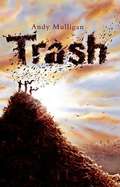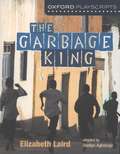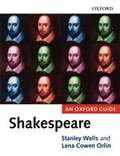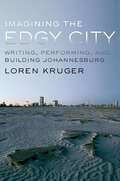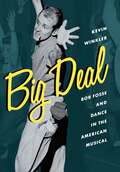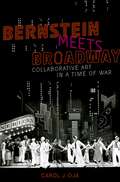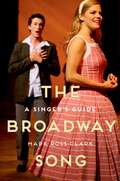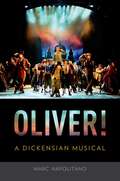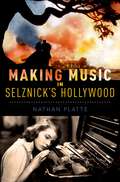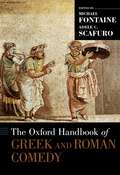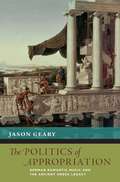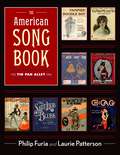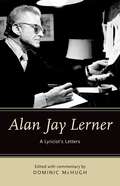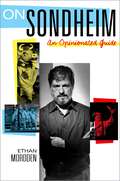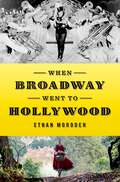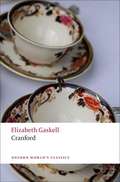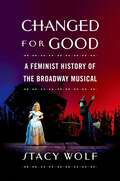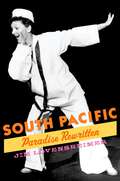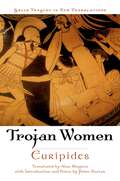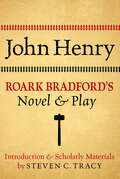- Table View
- List View
Rollercoasters: Trash (PDF)
by Andy MulliganSoon to be made into a film, Raphael, Gardo and Rat are three street kids who sort through mountains of trash for anything they can sell or recycle. When they come across a mysterious bag amongst the rubbish, containing a key and a wallet, they are soon on the run, using their wits and quick tongues to stay ahead of the police.
Oxford Playscripts: The Garbage King (PDF)
by Elizabeth Laird Oladipo AgboluajeAn engaging classroom playscript. Seeking shelter in a desolate graveyard, Mamo stumbles upon Dani, a fellow fugitive in the dangerous city of Addis Ababa. Both boys are desperately trying to outrun their past: Mamo has escaped the horrors of slavery while Dani has sacrificed a life of luxury by running away from his domineering father. Forced to live and work on a dumpsite in order to survive, just how long can they run before their pasts catch up with them?
Shakespeare: An Oxford Guide
by Stanley Wells Lena Cowen OrlinEdited by Stanley Wells and Lena Cowen Orlin, this stimulating and comprehensive guide to Shakespeare is an ideal text for undergraduate students. It includes over forty specially commissioned essays by an outstanding team of scholars. Each essay is written in an accessible and engaging style and is followed by annotated suggestions for further reading. Shakespeare: An Oxford Guide is divided into four key parts. Part One offers concise introductions to the literary and historical contexts in which Shakespeare lived and worked. It covers the society, culture, language, theatre, and playwriting conventions of Shakespeare's time and also discusses his contemporary impact. Part Two offers critical overviews of Shakespeare's achievements in the major genres. Each overview is followed by a reading that explores Shakespeare's use of the traditions, scope, and boundaries of that genre in one of his key works. Part Three discusses current critical approaches to the study of Shakespeare. Each chapter outlines a specific approach and is followed by a reading applying that approach to one of Shakespeare's works. Part Four offers chapters on Shakespeare's intellectual and cultural impact over the ages.
Imagining the Edgy City: Writing, Performing, and Building Johannesburg
by Loren Kruger"All roads lead to Johannesburg," remarks the narrator of Alan Paton's novel Cry, The Beloved Country. Taking this quote as her impetus, Loren Kruger guides readers into the heart of South Africa's largest city. Exploring a wide range of fiction, film, architecture, performance, and urban practices from trading to parades, Imagining the Edgy City traverses Johannesburg's rich cultural terrain over the last century. The "edgy city" in Kruger's exploration refers not only to persistent boundaries between the haves and have-nots but also to the cosmopolitan diversity and innovation that has emerged from Johannesburg. The book begins with the building boom, performances and uneven but noteworthy inter-racial exchange that marked the city's fiftieth-anniversary celebration at the Empire Exhibition in 1936. This celebration rapidly gave way to the political repression and civil unrest that characterized South Africa from 1950 to 1990. Yet poetry, drama, fiction, and photography continued to thrive, bearing witness not only against apartheid but to alternatives beyond it. In the late twentieth century, the not quite post-apartheid condition fired the artistic imaginations of film makers as well as novelists. Urban neglect, rising crime, and the influx of migrants inspired noir cinema-like Michael Hammon's Wheels and Deals-and fiction about migration from Achmat Dangor to Phaswane Mpe, and in the twenty-first, urban renewal has produced public art that incorporates the desire lines of newcomers as well as natives. Alongside well-known artists such as Nadine Gordimer, William Kentridge, and David Goldblatt, the book introduces many artists, architects, writers, and other chroniclers who have hitherto received little attention abroad. Ultimately, Johannesburg emerges as a city whose negotiation of the tensions between incivility and innovation invites comparisons with modern conurbations across the world, not only African cities such as Dakar, or other cities of the "south" such as Bogotá, but also with major metropolises in North America and Europe from Chicago to Paris. A multi-faceted work that speaks to scholars in urban studies, literature, and history, Imagining the Edgy City is a rich example of interdisciplinary scholarship at its best.
Big Deal: Bob Fosse and Dance in the American Musical (Broadway Legacies)
by Kevin WinklerBob Fosse (1927-1987) is recognized as one of the most significant figures in post-World War II American musical theater. With his first Broadway musical, The Pajama Game in 1954, the "Fosse style" was already fully developed, with its trademark hunched shoulders, turned-in stance, and stuttering, staccato jazz movements. Fosse moved decisively into the role of director with Redhead in 1959 and was a key figure in the rise of the director-choreographer in the Broadway musical. He also became the only star director of musicals of his era--a group that included Jerome Robbins, Gower Champion, Michael Kidd, and Harold Prince--to equal his Broadway success in films. Following his unprecedented triple crown of show business awards in 1973 (an Oscar for Cabaret, Emmy for Liza with a Z, and Tony for Pippin), Fosse assumed complete control of virtually every element of his projects. But when at last he had achieved complete autonomy, his final efforts, the film Star 80 and the musical Big Deal, written and directed by Fosse, were rejected by audiences and critics. A fascinating look at the evolution of Fosse as choreographer and director, Big Deal: Bob Fosse and Dance in the American Musical considers Fosse's career in the context of changes in the Broadway musical theater over four decades. It traces his early dance years and the importance of mentors George Abbott and Jerome Robbins on his work. It examines how each of the important women in his adult life--all dancers--impacted his career and influenced his dance aesthetic. Finally, the book investigates how his evolution as both artist and individual mirrored the social and political climate of his era and allowed him to comfortably ride a wave of cultural changes.
Big Deal: Bob Fosse and Dance in the American Musical (Broadway Legacies)
by Kevin WinklerBob Fosse (1927-1987) is recognized as one of the most significant figures in post-World War II American musical theater. With his first Broadway musical, The Pajama Game in 1954, the "Fosse style" was already fully developed, with its trademark hunched shoulders, turned-in stance, and stuttering, staccato jazz movements. Fosse moved decisively into the role of director with Redhead in 1959 and was a key figure in the rise of the director-choreographer in the Broadway musical. He also became the only star director of musicals of his era--a group that included Jerome Robbins, Gower Champion, Michael Kidd, and Harold Prince--to equal his Broadway success in films. Following his unprecedented triple crown of show business awards in 1973 (an Oscar for Cabaret, Emmy for Liza with a Z, and Tony for Pippin), Fosse assumed complete control of virtually every element of his projects. But when at last he had achieved complete autonomy, his final efforts, the film Star 80 and the musical Big Deal, written and directed by Fosse, were rejected by audiences and critics. A fascinating look at the evolution of Fosse as choreographer and director, Big Deal: Bob Fosse and Dance in the American Musical considers Fosse's career in the context of changes in the Broadway musical theater over four decades. It traces his early dance years and the importance of mentors George Abbott and Jerome Robbins on his work. It examines how each of the important women in his adult life--all dancers--impacted his career and influenced his dance aesthetic. Finally, the book investigates how his evolution as both artist and individual mirrored the social and political climate of his era and allowed him to comfortably ride a wave of cultural changes.
Bernstein Meets Broadway: Collaborative Art in a Time of War (Broadway Legacies)
by Carol J. OjaWinner of the 2015 Music in American Culture Award from the American Musicological Society When Leonard Bernstein first arrived in New York City, he was an unknown artist working with other brilliant twentysomethings, notably Jerome Robbins, Betty Comden, and Adolph Green. By the end of the 1940s, these artists were world famous. Their collaborations defied artistic boundaries and subtly pushed a progressive political agenda, altering the landscape of musical theater, ballet, and nightclub comedy. In Bernstein Meets Broadway: Collaborative Art in a Time of War, award-winning author and scholar Carol J. Oja examines the early days of Bernstein's career during World War II, centering around the debut in 1944 of the Broadway musical On the Town and the ballet Fancy Free. As a composer and conductor, Bernstein experienced a meteoric rise to fame, thanks in no small part to his visionary colleagues. Together, they focused on urban contemporary life and popular culture, featuring as heroes the itinerant sailors who bore the brunt of military service. They were provocative both artistically and politically. In a time of race riots and Japanese internment camps, Bernstein and his collaborators featured African American performers and a Japanese American ballerina, staging a model of racial integration. Rather than accepting traditional distinctions between high and low art, Bernstein's music was wide-open, inspired by everything from opera and jazz to cartoons. Oja shapes a wide-ranging cultural history that captures a tumultuous moment in time. Bernstein Meets Broadway is an indispensable work for fans of Broadway musicals, dance, and American performance history.
The Broadway Song: A Singer's Guide
by Mark Ross ClarkTruly powerful vocal performance in musical theater is more than just the sum of good vocal tone and correct notes. As experienced teacher, director, and performer Mark Ross Clark lays out in The Broadway Song, powerful performance communicates the central function of a song within the context of the surrounding narrative, or the "truth" of a song. Because unstaged performances of a song, such as auditions, are key to the success of all aspiring singers, Clark provides here the essential practical manual that will help performers choose the right pieces for their vocal abilities and identify the key truths of them. Clark begins by walking readers conceptually through how a song's truth is based in contexts: what show is a song from? Which character sings it? When in the show does it occur? Answering these questions will lead readers to more convincing performances that are grounded in the text, music, character, context, and larger environment (setting, time frame, and circumstances). The Broadway Song provides a comprehensive guide to the formal characteristics of key Broadway songs on a song-by-song basis, including main voice type, secondary voice qualities (such as soprano-lyric or alto-comic), range and tessitura, as well as larger contextual materials about the source -- from the musical's background, information about the character singing, and synoptic narrative information for the song -- that provide the performer a way into the character. Clark moreover brings his wide-ranging and extensive experience as a director, performer, and teacher to bear in his performance notes on the individual pieces. Additionally, he includes excerpts from short interviews with artists that provide insight into the song from the perspective of those who first created (or re-created) it. The interviews, conducted with composers, lyricists, performers, and -- in one case -- book collaborators, are snapshots into the creative process, and act as conduits to further study of the selected songs.
Oliver!: A Dickensian Musical
by Marc NapolitanoWhen the show was first produced in 1960, at a time when transatlantic musical theatre was dominated by American productions, Oliver! already stood out for its overt Englishness. But in writing Oliver!, librettist and composer Lionel Bart had to reconcile the Englishness of his Dickensian source with the American qualities of the integrated book musical. To do so, he turned to the musical traditions that had defined his upbringing: English music hall, Cockney street singing, and East End Yiddish theatre. This book reconstructs the complicated biography of Bart's play, from its early inception as a pop musical inspired by a marketable image, through its evolution into a sincere Dickensian adaptation that would push English musical theatre to new dramatic heights. The book also addresses Oliver!'s phenomenal reception in its homeland, where audiences responded to the musical's Englishness with a nationalistic fervor. The musical, which has more than fulfilled its promise as one of the most popular English musicals of all time, remains one of the country's most significant shows. Author Marc Napolitano shows how Oliver!'s popularity has ultimately exerted a significant influence on two separate cultural trends. Firstly, Bart's adaptation forever impacted the culture text of Dickens's Oliver Twist; to this day, the general perception of the story and the innumerable allusions to the novel in popular media are colored heavily by the sights, scenes, sounds, and songs from the musical, and virtually every major adaptation of from the 1970s on has responded to Bart's work in some way. Secondly, Oliver! helped to move the English musical forward by establishing a post-war English musical tradition that would eventually pave the way for the global dominance of the West End musical in the 1980s. As such, Napolitano's book promises to be an important book for students and scholars in musical theatre studies as well as to general readers interested in the megamusical.
Making Music in Selznick's Hollywood (Oxford Music/Media Series)
by Nathan PlatteThrough the rise and fall of the Hollywood studio system, David O. Selznick reigned as Hollywood's preeminent producer. His reputation depended in large part on music. The orchestral cacophony of King Kong, the pulsing electronic sonorities of Spellbound, and the Tara theme from Gone with the Wind made music a distinguishing feature of the Selznick experience. By flaunting music's role in film and overseeing its distribution through sheet music, concerts, radio broadcasts, and soundtrack albums, Selznick cultivated a fascination with film scores. But he did not do it alone. In Making Music in Selznick's Hollywood, Nathan Platte brings to light the men and women whose work sounds throughout Selznick's many films. The cast includes familiar composers like Max Steiner, Franz Waxman, and Dimitri Tiomkin, but extends to overlooked contributors, including music editor Audray Granville, orchestrator Hugo Friedhofer, harpist Louise Klos, choral director Jester Hairston, publicist Ted Wick, and many others. Novelists, studio writers, and directors like Alfred Hitchcock also influenced the soundscapes of Selznick's films. Whether working with the producer directly or managing his presence from a distance, all had to reckon with Selznick's musical preoccupations. Rarely was it easy. Rewritten scores, fired personnel, and other skirmishes reflect the troubles-and uneven compromises-that shaped music for films like Gone with the Wind, Duel in the Sun, and Rebecca. Even Selznick anticipated that such problems would "go down in the history of Hollywood as the last wild fling of people who really fiddled-and how!-while Hollywood burned." Drawing on extensive archival research, Platte recounts those stories here, tracing Selznick's musical labors during the silent era through his work at the major studios and his culminating efforts at Selznick International Pictures. Taken together, Selznick's films provide a sweeping vista of the relationships among musicians and filmmakers that defined the Hollywood sound.
The Oxford Handbook of Greek and Roman Comedy (Oxford Handbooks)
by Michael Fontaine Adele C. ScafuroIn recent decades literary approaches to drama have multiplied: new historical, intertextual, political, performative and metatheatrical, socio-linguistic, gender-driven, transgenre-driven. New information has been amassed, sometimes by re-examination of extant literary texts and material artifacts, at other times from new discoveries from the fields of archaeology, epigraphy, art history, and literary studies. The Oxford Handbook of Greek and Roman Comedy marks the first comprehensive introduction to and reference work for the unified study of ancient comedy. From the birth of comedy in Greece to its end in Rome, from the Hellenistic diffusion of performances after the death of Menander to its artistic, scholarly, and literary receptions in the later Roman Empire, no topic is neglected. 41 essays spread across Greek Comedy, Roman Comedy, and the transmission and reception of Ancient comedy by an international team of experts offer cutting-edge guides through the immense terrain of the field, while an expert introduction surveys the major trends and shifts in scholarly study of comedy from the 1960s to today. The Handbook includes two detailed appendices that provide invaluable research tools for both scholars and students. The result offers Hellenists an excellent overview of the earliest reception and creative reuse of Greek New Comedy, Latinists a broad perspective of the evolution of Roman Comedy, and scholars and students of classics an excellent resource and tipping point for future interdisciplinary research.
The American Song Book: The Tin Pan Alley Era
by Philip Furia Laurie J. PattersonThe American Song Book, Volume I: The Tin Pan Alley Era is the first in a projected five-volume series of books that will reprint original sheet music, including covers, of songs that constitute the enduring standards of Irving Berlin, Jerome Kern, the Gershwins, and other lyricists and composers of what has been called the "Golden Age" of American popular music. These songs have done what popular songs are not supposed to do-stayed popular. They have been reinterpreted year after year, generation after generation, by jazz artists such as Charlie Parker and Art Tatum, Ella Fitzgerald and Louis Armstrong. In the 1950s, Frank Sinatra began recording albums of these standards and was soon followed by such singers as Tony Bennet, Doris Day, Willie Nelson, and Linda Ronstadt. In more recent years, these songs have been reinterpreted by Rod Stewart, Harry Connick, Jr., Carly Simon, Lady GaGa, K.D. Laing, Paul McCartney, and, most recently, Bob Dylan. As such, these songs constitute the closest thing America has to a repertory of enduring classical music. In addition to reprinting the sheet music for these classic songs, authors Philip Furia and Laurie Patterson place these songs in historical context with essays about the sheet-music publishing industry known as Tin Pan Alley, the emergence of American musical comedy on Broadway, and the "talkie" revolution that made possible the Hollywood musical. The authors also provide biographical sketches of songwriters, performers, and impresarios such as Florenz Ziegfeld. In addition, they analyze the lyrical and musical artistry of each song and relate anecdotes, sometimes amusing, sometimes poignant, about how the songs were created. The American Songbook is a book that can be read for enjoyment on its own or be propped on the piano to be played and sung.
Alan Jay Lerner: A Lyricist's Letters
by Dominic MchughThe man behind "I Could Have Danced all Night" and "Almost Like Being in Love", lyricist Alan Jay Lerner (1918-1986) is widely regarded as one of the most important figures of the American musical stage. In penning the lyrics to some of the most well-known and beloved Broadway shows, including Brigadoon, Paint Your Wagon, My Fair Lady, and Camelot, Lerner worked and corresponded with some of the greatest luminaries of popular entertainment over a career which spanned four decades, from performers like Rex Harrison and Julie Andrews to composers like André Previn, Leonard Bernstein, Charles Strouse, Andrew Lloyd Webber, and especially Frederick Loewe. In this rich collection of correspondence, most of it published for the first time, author Dominic McHugh sheds new light on Lerner's working relationships with these legendary figures. McHugh's extensive commentary reveals Lerner's turbulent partnerships with Loewe and Lane, his affection for Harrison, and his reverence for Burton. Particular emphasis is placed on Lerner's aborted projects with composers like Richard Rodgers and Arthur Schwartz. Especially valuable is the correspondence from his final years, in which he worked on a movie version of The Merry Widow, a BBC TV series about musicals, and a musical version of My Man Godfrey, none of which came to fruition. The collection ends with a poignant final exchange between Lerner and Andrew Lloyd Webber, with whom he was to have written The Phantom of the Opera. Overall, this important and lively book reveals the highs and lows of the career of one of America's wittiest and most romantic lyricists.
On Sondheim: An Opinionated Guide
by Ethan MorddenIn On Sondheim, renowned author Ethan Mordden takes the reader on a tour of Stephen Sondheim's work, arguing for the importance and appeal of the composer-lyricist in American theater and, even more, in American culture. Over the course of eighteen shows, Mordden demonstrates that Sondheim is a classical composer who happens to write musicals. Sondheim has intellectualized the musical by tackling serious content usually reserved for the spoken stage: nonconformism (in Anyone Can Whistle, 1964), history (in Pacific Overtures, 1976), and cannibalism as a metaphor for class warfare (Sweeney Todd, 1979). Yet his work combines complex music and intellectual plots with a masterly skill for the fabric of theatre. His shows are all intensely theatrical, produced with flair and brilliance, whether in the lush operetta of A Little Night Music (1973) or the quixotic fairy-tale magic of Into the Woods (1987). Mordden provides fresh insights and analyses of every Sondheim show, from his first hit (West Side Story, 1957) to his most recent title (Road Show, 2008). Each musical has a dedicated chapter, including articles on Sondheim's life and his major influences, and comprehensive bibliographical and discographical essays place the Sondheim literature and recordings in perspective. Writing with his usual blend of the scholarly and the popular - with a wicked sense of humor - Ethan Mordden reveals why Stephen Sondheim has become Broadway's most significant voice in the last fifty years.
On Sondheim: An Opinionated Guide
by Ethan MorddenIn On Sondheim, renowned author Ethan Mordden takes the reader on a tour of Stephen Sondheim's work, arguing for the importance and appeal of the composer-lyricist in American theater and, even more, in American culture. Over the course of eighteen shows, Mordden demonstrates that Sondheim is a classical composer who happens to write musicals. Sondheim has intellectualized the musical by tackling serious content usually reserved for the spoken stage: nonconformism (in Anyone Can Whistle, 1964), history (in Pacific Overtures, 1976), and cannibalism as a metaphor for class warfare (Sweeney Todd, 1979). Yet his work combines complex music and intellectual plots with a masterly skill for the fabric of theatre. His shows are all intensely theatrical, produced with flair and brilliance, whether in the lush operetta of A Little Night Music (1973) or the quixotic fairy-tale magic of Into the Woods (1987). Mordden provides fresh insights and analyses of every Sondheim show, from his first hit (West Side Story, 1957) to his most recent title (Road Show, 2008). Each musical has a dedicated chapter, including articles on Sondheim's life and his major influences, and comprehensive bibliographical and discographical essays place the Sondheim literature and recordings in perspective. Writing with his usual blend of the scholarly and the popular - with a wicked sense of humor - Ethan Mordden reveals why Stephen Sondheim has become Broadway's most significant voice in the last fifty years.
When Broadway Went to Hollywood
by Ethan MorddenWhen films like The Jazz Singer started to integrate synchronized music, in the late 1920s many ambitious songwriting pioneers of the Great White Way - George and Ira Gershwin, Cole Porter, Richard Rodgers, and Lorenz Hart, among many others - were enticed westward by Hollywood studios' promises of national exposure and top dollar success. But what happened when writers native to the business of Broadway ran into the very different business of Hollywood? Their movies had their producer despots, their stacking of writing teams on a single project, their use of five or six songs per story where Broadway fit in a dozen, and it seemed as if everyone in Hollywood was uncomfortable with characters bursting into song on the street, in your living room, or in "a cottage small by a waterfall." Did the movies give theater writers a chance to expand their art, or did mass marketing ruin the musical's quintessential charm? Is it possible to trace the history of the musical through both stage and screen manifestations, or did Broadway and Hollywood give rise to two wholly irreconcilable art forms? And, finally, did any New York writer or writing team create a film musical as enthralling and timeless as their work for the stage? In When Broadway Went to Hollywood, writer and celebrated steward of musical theatre Ethan Mordden directs his unmistakable wit and whimsy to these challenging questions and more, charting the volatile and galvanizing influence of Broadway on Hollywood (and vice versa) throughout the twentieth century. Along the way, he takes us behind the scenes of the great Hollywood musicals you've seen and loved (The Wizard of Oz, Gigi, The Sound of Music, Chicago, West Side Story, The Music Man, Grease) as well as some of the outrageous flops you probably haven't. The first book to tell the story of how Broadway affected the Hollywood musical, When Broadway Goes to Hollywood is sure to thrill theatre buffs and movie lovers alike.
When Broadway Went to Hollywood
by Ethan MorddenWhen films like The Jazz Singer started to integrate synchronized music, in the late 1920s many ambitious songwriting pioneers of the Great White Way - George and Ira Gershwin, Cole Porter, Richard Rodgers, and Lorenz Hart, among many others - were enticed westward by Hollywood studios' promises of national exposure and top dollar success. But what happened when writers native to the business of Broadway ran into the very different business of Hollywood? Their movies had their producer despots, their stacking of writing teams on a single project, their use of five or six songs per story where Broadway fit in a dozen, and it seemed as if everyone in Hollywood was uncomfortable with characters bursting into song on the street, in your living room, or in "a cottage small by a waterfall." Did the movies give theater writers a chance to expand their art, or did mass marketing ruin the musical's quintessential charm? Is it possible to trace the history of the musical through both stage and screen manifestations, or did Broadway and Hollywood give rise to two wholly irreconcilable art forms? And, finally, did any New York writer or writing team create a film musical as enthralling and timeless as their work for the stage? In When Broadway Went to Hollywood, writer and celebrated steward of musical theatre Ethan Mordden directs his unmistakable wit and whimsy to these challenging questions and more, charting the volatile and galvanizing influence of Broadway on Hollywood (and vice versa) throughout the twentieth century. Along the way, he takes us behind the scenes of the great Hollywood musicals you've seen and loved (The Wizard of Oz, Gigi, The Sound of Music, Chicago, West Side Story, The Music Man, Grease) as well as some of the outrageous flops you probably haven't. The first book to tell the story of how Broadway affected the Hollywood musical, When Broadway Goes to Hollywood is sure to thrill theatre buffs and movie lovers alike.
Cranford
by Elizabeth Cleghorn GaskellA portrait of the residents of an English country town in the mid nineteenth century, Cranford relates the adventures of Miss Matty and Miss Deborah, two middle-aged spinster sisters striving to live with dignity in reduced circumstances. Through a series of vignettes, Elizabeth Gaskell portrays a community governed by old-fashioned habits and dominated by friendships between women. Her wry account of rural life is undercut, however, by tragedy in its depiction of such troubling events as Matty's bankruptcy, the violent death of Captain Brown or the unwitting cruelty of Peter Jenkyns. Written with acute observation, Cranford is by turns affectionate, moving and darkly satirical.
Changed for Good: A Feminist History of the Broadway Musical
by Stacy WolfFrom Adelaide in "Guys and Dolls" to Nina in "In the Heights" and Elphaba in "Wicked," female characters in Broadway musicals have belted and crooned their way into the American psyche. In this lively book, Stacy Wolf illuminates the women of American musical theatre - performers, creators, and characters -- from the start of the cold war to the present day, creating a new, feminist history of the genre. Moving from decade to decade, Wolf first highlights the assumptions that circulated about gender and sexuality at the time. She then looks at the leading musicals to stress the key aspects of the plays as they relate to women, and often finds overlooked moments of empowerment for female audience members. The musicals discussed here are among the most beloved in the canon--"West Side Story," "Cabaret," "A Chorus Line," "Phantom of the Opera," and many others--with special emphasis on the blockbuster "Wicked." Along the way, Wolf demonstrates how the musical since the mid-1940s has actually been dominated by women--women onstage, women in the wings, and women offstage as spectators and fans.
South Pacific: Paradise Rewritten (Broadway Legacies)
by Jim LovensheimerRodgers and Hammerstein's Tony and Pulitzer Prize-winning musical "South Pacific" has remained a mainstay of the American musical theater since it opened in 1949, and its powerful message about racial intolerance continues to resonate with twenty-first century audiences. Drawing on extensive research in the Rodgers and the Hammerstein papers, including Hammerstein's personal notes on James A. Michener's Tales of the South Pacific, Jim Lovensheimer offers a fascinating reading of "South Pacific" that explores the show's complex messages and demonstrates how the presentation of those messages changed throughout the creative process. Indeed, the author shows how Rodgers and especially Hammerstein continually refined and softened the theme of racial intolerance until it was more acceptable to mainstream Broadway audiences. Likewise, Lovensheimer describes the treatment of gender and colonialism in the musical, tracing how it both reflected and challenged early Cold War Era American norms. The book also offers valuable background to the writing of "South Pacific," exploring the earlier careers of both Rodgers and Hammerstein, showing how they frequently explored serious social issues in their other works, and discussing their involvement in the political movements of their day, such as Hammerstein's founding membership in the Hollywood Anti-Nazi League. Finally, the book features many wonderful appendices, including two that compare the original draft and final form of the classic songs "I'm Gonna Wash That Man Right Out-a My Hair" and "I'm In Love With a Wonderful Guy." Thoroughly researched and compellingly written, this superb book offers a rich, intriguing portrait of a Broadway masterpiece and the era in which it was created.
Trojan Women (Greek Tragedy in New Translations)
by EuripidesAmong surviving Greek tragedies only Euripides' Trojan Women shows us the extinction of a whole city, an entire people. Despite its grim theme, or more likely because of the centrality of that theme to the deepest fears of our own age, this is one of the relatively few Greek tragedies that regularly finds its way to the stage. Here the power of Euripides' theatrical and moral imagination speaks clearly across the twenty-five centuries that separate our world from his. The theme is really a double one: the suffering of the victims of war, exemplified by the woman who survive the fall of Troy, and the degradation of the victors, shown by the Greeks' reckless and ultimately self-destructive behavior. It offers an enduring picture of human fortitude in the midst of despair. Trojan Women gains special relevance, of course, in times of war. It presents a particularly intense account of human suffering and uncertainty, but one that is also rooted in considerations of power and policy, morality and expedience. Furthermore, the seductions of power and the dangers both of its exercise and of resistance to it as portrayed in Trojan Women are not simply philosophical or rhetorical gambits but part of the lived experience of Euripides' day. And their analogues in our own day lie all too close at hand. This new powerful translation of Trojan Women includes an illuminating introduction, explanatory notes, a glossary, and suggestions for further reading.
John Henry: Roark Bradford's Novel and Play
by Roark BradfordRoark Bradford's 1931 novel and 1939 play dealing with the legendary folk-hero John Henry (both titled John Henry) were extremely influential in their own time, but have since then been nearly forgotten. Steven C. Tracy has united these hard-to-find works in a single critical edition that helps contextualize-and revive-both texts. An expansive introduction explores Bradford's life; recounts critical responses to his works; and surveys John Henry's pervasive influence in folk, literary, and popular culture. The volume also features a wide array of supplementary materials including a selected bibliography and discography, transcriptions of folksong texts and recordings available during the 1930s, and a chronology of the lives of both Bradford and Henry. As Tracy's introduction makes clear, such a consideration of Bradford--set in the context of writers, both black and white, drawing upon African American folklore and using dialects along with stereotypical and non-stereotypical portrayals--is long overdue. This new edition is a windfall for scholars and students of folklore and African American literature.
